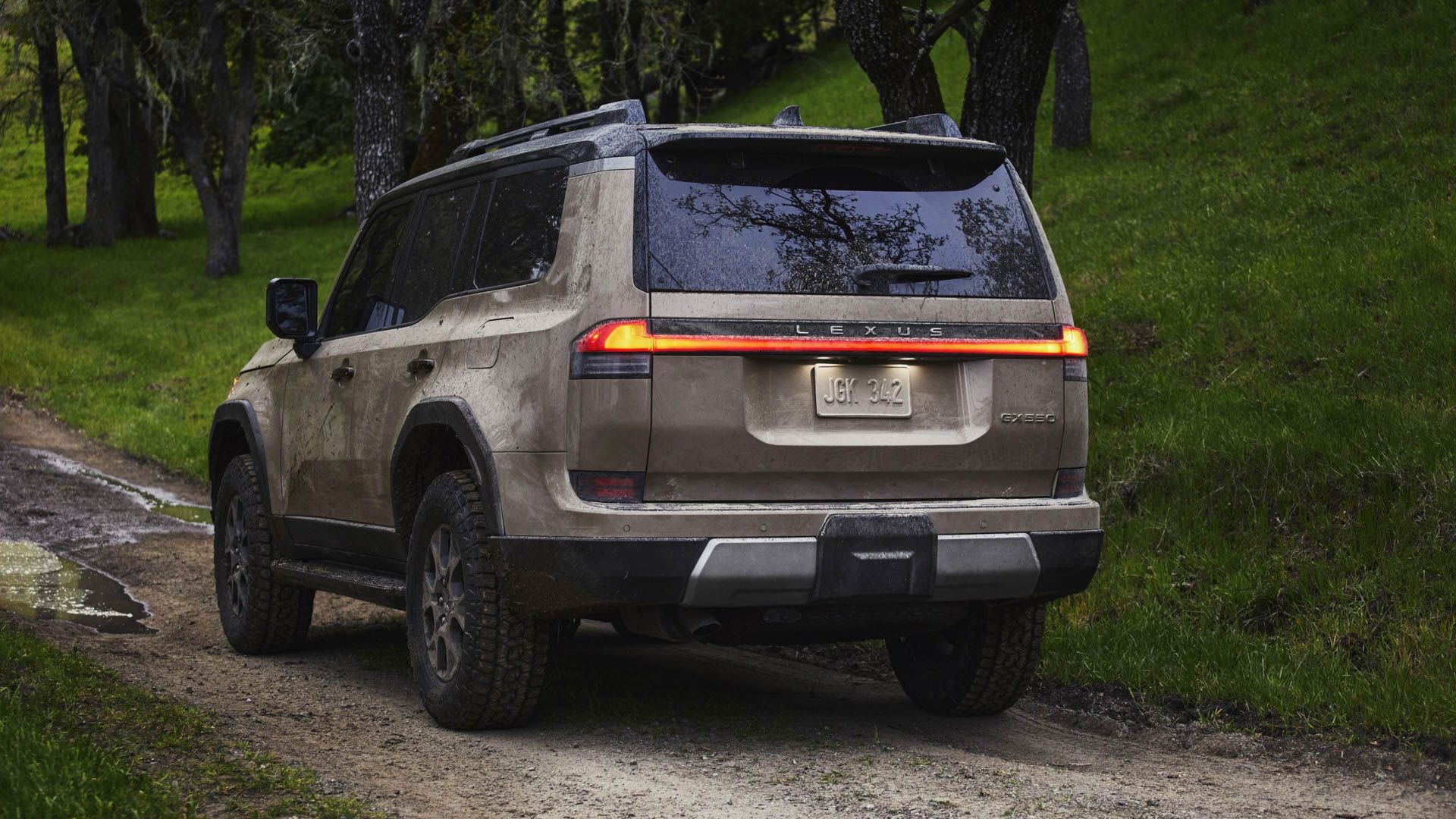How the Lexus GX’s Ladder Frame Is Ready for Future EVs
The new Lexus GX is one of the coolest new SUVs on the market, with its boxy, kick-ass styling and twin-turbo V6. Thankfully, it should stick around for a while, as its ladder frame chassis was built with the future of electrification in mind.
At the moment, only one powertrain is available: a 3.4-liter twin-turbo V6 that makes 349 horsepower and 479 pound-feet of torque, which is paired with a ten-speed automatic. However, when Toyota and Lexus were developing the GA-F platform (Toyota Sequoia, Tundra, Land Cruiser), they designed it with the capability of housing battery packs, as well as hybrid and electric powertrains.
"With modifications [to the GA-F platform], that's something that was considered during the original structural development of the car," Lexus Chief Engineer Koji Tsukaski told Motor Trend during the media reveal.
Both Toyota and Lexus want the GA-F platform to have a long life-cycle, which isn't surprising. The last-generation Land Cruiser chassis lasted over ten years, having launching in 2007. So if Toyota and Lexus want their new off-roaders to be competitive for another decade, electrification is necessary. While Tsukaski hinted that hybrids would be first, battery-electric vehicles are likely in the future.
"The base design does account for the possible use of BEVs," he said.
While this is good news for GX fans, it isn't exactly groundbreaking stuff. An electric Lexus GX (or Toyota Land Cruiser/Sequoia) wouldn't be the first latter-frame EV. The Ford F-150 Lightning and Chevy Silverado EV are both fully electric pickup trucks with ladder frame chassis. It's actually relatively easy to fit an EV battery pack in a ladder frame, as the cells are just packed in between the ladder frame rails. It's simpler packaging than with a monocoque (or unibody) chassis and allows for better interior space.
EVs are also quite good off road with the right setup, such as the Rivian R1T's quad-motor powertrain. Their ability to send torque to specific wheels in an instant is immensely helpful and their lower centers of gravity help keep them planted.
Off-roading enthusiasts were happy to see that the new Lexus GX kept its solid rear axle, which is preferrable for off roading, as solid axles provide better articulation over uneven terrain. Thankfully, that doesn't have to change with electrification, either. We've already seen that a few companies, such as Ford and Magna, have been working on solid electric axles for more serious off-roaders.
Tsukaski didn't say when an electrified GX would be coming but it's clear that Lexus has such a car in mind.
Source: The Drive


